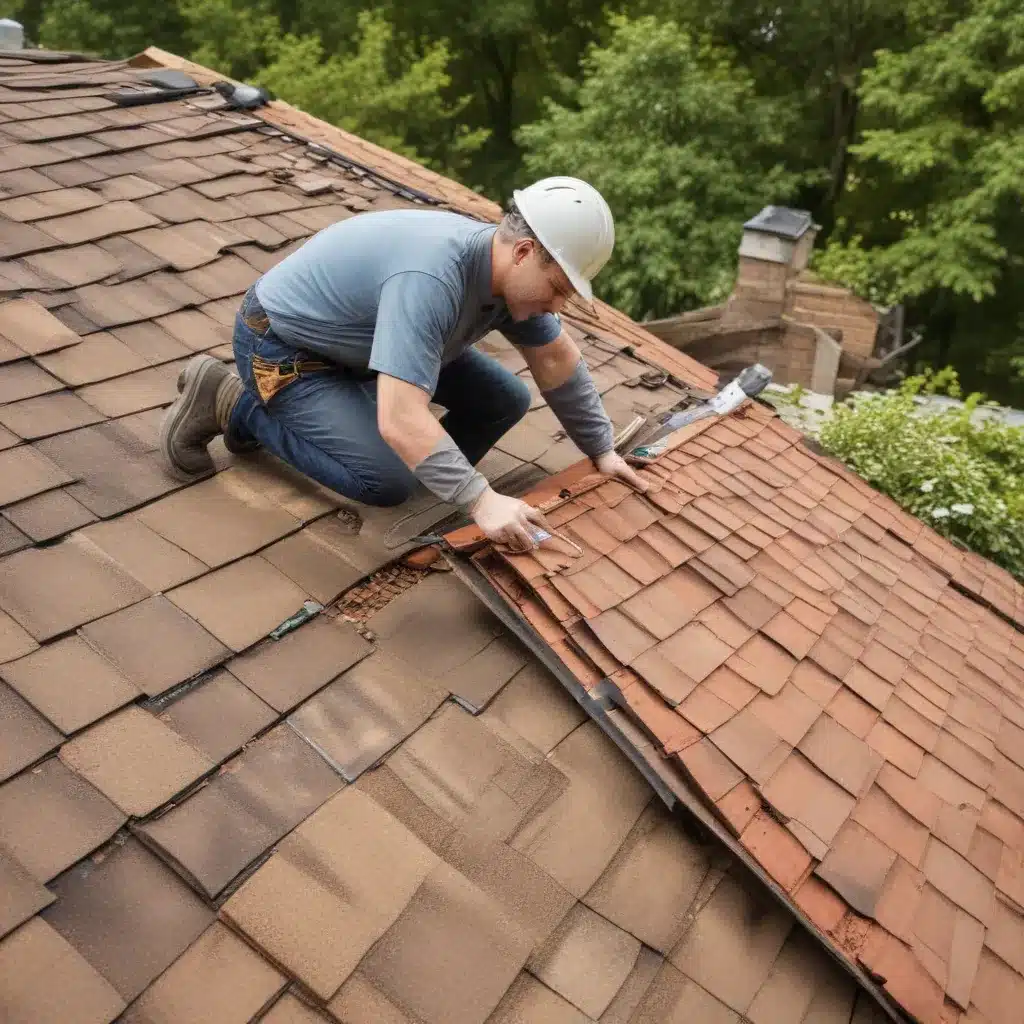
Unlocking the Secrets of Roof Maintenance and Repair
As a seasoned roofing professional, I’ve seen it all – from amateurish DIY attempts gone wrong to meticulously planned and executed roof projects that stand the test of time. If you’re a homeowner looking to tackle roof-related tasks, whether it’s a simple paint job, repointing chimney bricks, or addressing flashing issues, safety should be your top priority. In this comprehensive guide, I’ll share practical tips and in-depth insights to help you navigate the world of DIY roofing while protecting yourself and your home.
Assessing Your Roof’s Condition
Before embarking on any DIY roofing project, it’s crucial to conduct a thorough assessment of your roof’s current condition. Take a close look at the various components, such as the metal surfaces, chimney, and flashing, to identify any areas that need attention. Pay special attention to the slope and accessibility of your roof, as these factors will significantly impact the safety precautions you’ll need to take.
If your roof has a steep slope or is made of metal, you’ll need to exercise extra caution. Metal roofs can be slippery, and a steep pitch can make it challenging to maintain your footing. In such cases, it’s essential to have the necessary safety equipment and follow proper protocols to mitigate the risks of falling.
Choosing the Right Safety Equipment
Proper safety equipment is the cornerstone of any successful DIY roofing project. Invest in high-quality personal protective equipment (PPE) that will safeguard you from potential hazards. This includes:
- Harness and Lifeline: A full-body harness and secured lifeline are essential for working on steep or elevated roofs. These will prevent you from falling and minimize the risk of serious injury.
- Nonslip Footwear: Opt for shoes or boots with excellent traction to minimize the chances of slipping on the roof’s surface.
- Gloves: Protect your hands from cuts, scrapes, and burns by wearing durable, well-fitting gloves.
- Eye and Ear Protection: Safety glasses and earplugs or noise-canceling headphones can shield your eyes and ears from debris and loud noises.
Additionally, consider using safety scaffolding or a sturdy ladder to access the roof safely. Ensure that your ladder is firmly planted and secured to the roof, and always maintain three points of contact when climbing.
Preparing the Roof for DIY Work
Before you begin any roof-related tasks, it’s crucial to prepare the surface thoroughly. Start by clearing the area of any debris, tools, or materials that could pose a tripping hazard. Inspect the roof for loose or damaged shingles, and make necessary repairs before proceeding with your project.
If you’re working on a metal roof, pay close attention to the condition of the fasteners and sealants. Ensure that they are in good condition and properly secured to prevent potential leaks or safety issues.
Mastering Proper Roof Access and Movement
Navigating a roof can be challenging, particularly if it’s steep or has a complex design. Develop a clear plan for accessing the work area and moving around safely. Consider the following tips:
- Use Caution Zones: Designate specific areas on the roof as “caution zones” where extra care is required, such as near the roof’s edge or around chimneys.
- Avoid Walking Backwards: Always face forward when moving on the roof to maintain better visibility and balance.
- Take Breaks: Frequent rest breaks can help prevent fatigue and improve your concentration, reducing the risk of accidents.
- Secure Tools and Materials: Tether or secure any tools, equipment, or materials to prevent them from falling and causing harm to yourself or others.
Remember, your safety should always be the top priority when working on a roof. If you ever feel uncomfortable or unsure about your ability to complete a task safely, it’s best to call in a professional roofing contractor.
Protecting Your Home from Roof-Related Damage
While your personal safety is paramount, it’s also crucial to safeguard your home from potential damage during DIY roof projects. Consider the following precautions:
- Cover Landscaping: Lay down tarps or protective covers to shield your landscaping, gardens, and outdoor features from falling debris or materials.
- Protect Windows and Siding: Use temporary coverings or shields to guard against any accidental impacts or paint splatters.
- Manage Runoff: Ensure that any water, solvents, or other liquids used during your project are properly channeled away from the home’s foundation and other vulnerable areas.
By taking these steps, you can minimize the risk of unintended damage to your property and maintain the overall integrity of your home.
Embracing Modern Roofing Technologies
As you embark on your DIY roofing projects, don’t be afraid to explore the latest advancements in roofing materials and techniques. From innovative metal roofing systems to high-performance sealants and coatings, modern roofing technologies can enhance the longevity, efficiency, and aesthetic appeal of your home.
For example, some metal roofing products now feature textured or slip-resistant surfaces, making them safer for DIY installations. Similarly, advanced sealants and flashing materials can provide superior protection against leaks and weather-related damage. Stay informed about these evolving solutions, as they may offer valuable insights and opportunities to improve the safety and performance of your roof.
Conclusion
Tackling DIY roofing projects can be a rewarding and cost-effective way to maintain and enhance your home’s exterior, but it requires a keen focus on safety and proper preparation. By following the tips and insights outlined in this guide, you can confidently take on roof-related tasks while protecting yourself and your property. Remember, your safety should always be the top priority, and when in doubt, don’t hesitate to consult with a professional roofing contractor from Roofers in Northampton. With the right mindset and tools, you can successfully navigate the world of DIY roofing and enjoy the satisfaction of a job well done.

